After two less then successful albums Alice Cooper met a young Canadian by the name of Bob Ezrin and recorded their first classic album. The recognisable Cooper sound is here in spades and under Ezrin the group's songwriting has moved light years forward. Alice has described 'The Ballad Of Dwight Fry' as the ultimate Cooper song but Dennis' 'Black Juju' is possibly even more menacing while Michael's 'Long Way To Go' still rocks and rolls with the best any of them would ever record. Not a duff track anywhere and even the bizarre cover of Rolf Harris' aboriginal chant 'Sun Arise' works amazingly well to close the album. Completely essential.
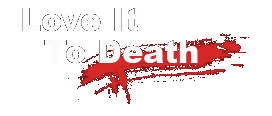
February/March (9th?) 1971 (UK-August?)
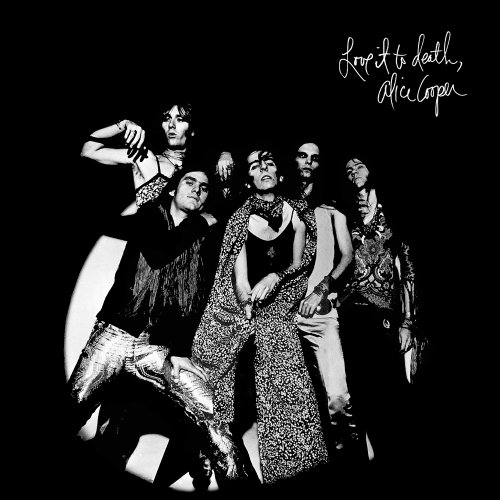
Track listing
- Caught In A Dream (Bruce)(3:54)
- I'm Eighteen (Bruce Cooper, Dunaway, Smith, Buxton)(3:00)
- Long Way To Go (Bruce)(3:01)
- Black Juju (Dunaway)(9:09)
- Is It My Body? (Bruce, Cooper,Dunaway, Smith, Buxton)(2:39)
- Hallowed By My Name (Smith)(2:25)
- Second Coming (Cooper)(3:02)
- Ballad Of Dwight Fry (Bruce, Cooper)(6:32)
- Sun Arise (Butler, Harris)(3:53)
Musicians
- Alice Cooper - Vocals and Harmonia
- Neal Smith - Drums and Vocals
- Dennis Dunaway - Bass and Vocals
- Glen Buxton - Lead Guitar
- Michael Bruce - Rhythm Guitar, Vocals, Piano and Organ
- 'Toronto' Bob Ezrin - Keyboards on 'Caught In A Dream', 'Hallowed By My Name', Second Coming' and 'Ballad Of Dwight Fry'
- Monica Lauer - Child voice on 'Ballad Of Dwight Fry'
Sleeve Notes
Produced By Jack Richardson and Bob Ezrin for Nimbus 9 Productions
Executive Producer: Jack Richardson
Session Engineer: Brian Christian
Mastering Engineer: Randy Kling
Recording Technician: Bill Conners
Recorded at RCA Mid-America Recording Center, Chicago
Enviromental Controls: Charlie Carnel
Cover Photographs: Prigent
Inside Cover Photography: David Griffiths
Album Notes - (Detailed release information)
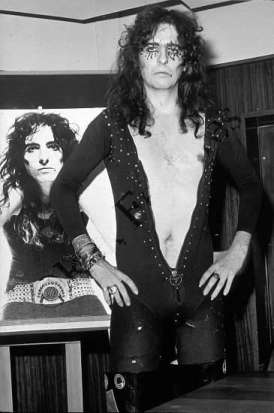
Alice at the Ambassador Hotel,
Los Angeles in July 1971.
'Love It To Death' is the album that nearly didn't happen. After two flop albums no one was to eager to throw more money behind what they assumed, with some justification, would be a non-starter. Shep and the band, however, weren't about to give up. Shep managed to convince Warner Brothers to pay for the recording of four new demos with a hot shot new producer he'd found from Canada called Bob Ezrin.
Shep and the band realised that to take the next step they needed a proper producer and after a little searching they decided on Jack Richardson of Nimbus 9 Productions in Toronto, renowned at the time for his work with Canadian act 'The Guess Who'. Contact was made but Richardson simply wasn't that interested. To shut them up he sent his new boy Ezrin down to check out the band and get rid of them. It didn't work out that way. In September Ezrin flew down to New York to see the band at Max's Kansas City and saw something in the band he thought had value. He returned to Toronto to convinced his boss they were worth recording. Richardson, still not convinced, said "if you think their so great YOU record them!" and shortly after Ezrin moved in with the band at their Pontiac base to start two months of writing and rehearsing for what would become 'Love It To Death'.
By November Billboard reported the band were recording at RCA Studios in Chicago. In 'Me, Alice' Alice recalls they recorded four songs (he names 'I'm Eighteen', 'Is It My Body', 'You Drive Me Nervous' and 'Sun Arise') as demos to show Warners what they had. It does the trick and the band get the go-ahead to finish the album.
'I'm Eighteen', originally called 'I Wish I was Eighteen Again', was released as a single around the first week of February 1970 and had been slowly climbing the charts for a while before the full album was released. It evenually peaks at #22. The single was an edited version of the original bluesy jam the band had been playing for a few months. Bob Ezrin, who on first hearing the song had originally thought the song was called 'I'm Edgy', had cut the original down to three minutes and tightened up the arrangement to produce the bands first solid hit record.
The albums second single, 'Caught In A Dream', was released around the end of May judging by its 'new entry' status in the Billboard chart dated June 11th, and reached a high point of #94.
Love it To Death' first appeared in the Billboard charts in the issue dated March 20th 1971 at #127, soundly thrashing the previous two albums on the strength of the single 'I'm Eighteen'. It peaked at #35 in May.
It's worth noting here that the Billboard charts play havok with accepted release dates for many early Alice Cooper albums (and singles). I'll try and explain why:
It would seem obvious to most that the Billboard charts would represent sales from the previous week, but that isn't the case. Due to the run up time for publication, and the fact that Billboard was post-dated on the cover to the Saturday after it actually appeared on the streets, the charts are actually around two weeks out. Back then each Billboard issue showed data collected 11 days before the cover date. So, for example, an issue dated Saturday March 20th would have it's data collected on Tuesday March 9th. That data would cover the sales period from Tuesday March 2nd to Monday March 8th (albums were released on a Tuesday in the US. Monday in the UK). So.. for Billboard to show an album entering it's charts in the March 20th edition it MUST have been release on Tuesday March 2nd or before. Now I use these particular dates as examples for a reason. 'Love It To Death' first appears as a "new entry" on the Billboard chart in the issue dated March 20th (A review is in the same issue). Even assuming it entered the top 200 chart the week of release (which is pretty safe bet for any Alice Cooper albums from 'Killer' onwards at least.) it HAD to be released on March 2nd or before. This discrepency is shown for many normally accepted release dates for Alice Cooper albums. Unfortunatly I've never been able to access anything reputed to be from official Warner Brothers records showing exact release dates from the period.
The child's voice on 'Ballad Of Dwight Fry', Monica Lauer, was actually a woman in her early twenties who was a friend of the band.
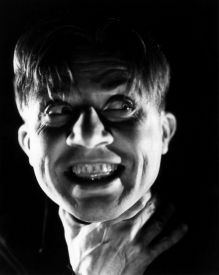
The Real Dwight Frye, pictured here in the 1935 movie 'The Bride Of Frankenstein'
(Photo Courtesy of Mike Drew's Collection)
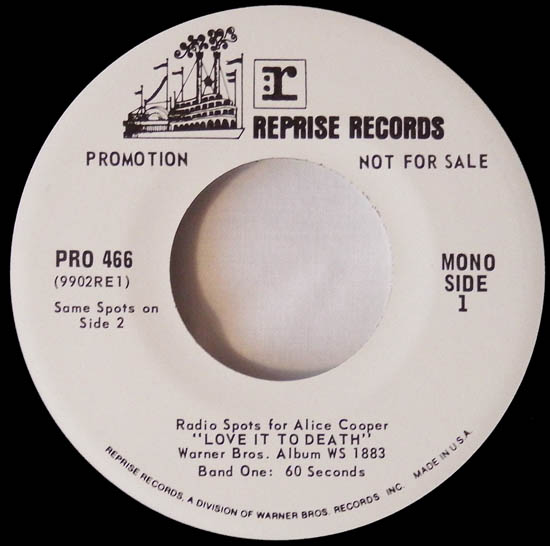
To promote the the album a promotional 7" single was released with an advert for the album for radio stations to play. It was a 60 second clip under the catalogue number PRO 466. They also released a similar 7" for 'Easy Action'.
Dwight Frye (note the extra 'e') was a real person. He was an actor who featured in several early movies including the 1931 version of 'Frankenstein' and the original 'Dracula', in which he played 'Renfield' the bug eating servant of the Count. He died of a heart attack while boarding a bus.
Neal Smith in 1999:
'Sun Arise' was originally recorded by Rolf Harris, an Australian entertainer/artist resident in the UK who had his own show for many years. Apparently Bob Ezrin and Alice heard a cleaning woman humming and singing in the corridor while cleaning and invited her to sing the background vocals on the track.
According to Janice Buxton 'Black Juju' was the name of a dog that hung around the Pontiac farm the band lived at. Neal Smith recalls 'Black Juju' as the only track recorded totally live in the studio, something Dennis Dunaway backs up in his autobiography:
Asked what was said before 'Hallowed Be My Name' at a Glen Buxton Memorial Weekend Neal said Brian Christian had this thing about fishing, and it was Brian that said 'Don't count your CARPS before they're hatched".
'Is It My Body' features lyrics partly inspired by being depressed in the Abbot Hotel in Greenwich Village.
When asked in 2011 about the lack of more long songs like 'Black Juju' and 'Halo Of Flies' by the band Dennis Dunaway replied:
The Cover
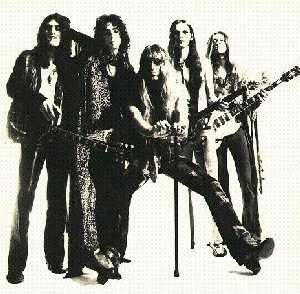
The 'Love It To Death' inside cover pics with the spider-esque make-up were shot in November 1970 by a starving college kid named Dave Griffith, along with over 500 others. According to Dave it seemed like a "Hey Cindy, pass me that mascara" smear of the moment type thing. The front and back covers were done by a profesional - Prigent - at another session. The AC band also hired Dave to shoot them on a brass bed in a white room on white sheets for submission to Playboy. They never submitted them to Dave's knowledge"- Sickthing Mark, Submitted December 1995/March 1996.
'Love It To Death' Live
Alice Cooper shows had always been theatrical. Even back in the Phoenix days as the Spiders the band used anything they could find on stage and very early shots of them at the VIP have a guillotine visible in the background. However the 'Love It To Death' tour was where all the parts really came together. For a start Alice played the 'Alice Cooper' character throughout the show, rarely speaking to the crowd between songs and if he did he avoid the standard 'clap your hands', 'Hello Chicago' banter with the crowd. But more then that they now had the snake, the nurse (played by Neal's sister and Dennis girlfriend Cindy Smith) and, for 'Black Juju', an electric chair smoke effects and lights that flashed as Alice was executed for the crimes commited through the show. This was a big deal at the time when almost all bands just walked on stage in jeans and t-shirts.
The shows including only one song from the first two albums, 'Return Of The Spiders', and that was the encore. Everything else was jettisoned for the new record. That too was gone by the next tour. 'Love It To Death' was almost a fresh start. The band knew that with Ezrin that had found the final part f the puzzle and didn't look back.
Setlists from the tour generally seem to have followed the exact same pattern in the main, something Alice has generally kept to ever since. In fact this tour was in many ways the blueprint for every tour that has followed. And why not. It worked perfectly.
'Sun Arise' opened the proceedings with the stage dark and Alice appearing near the front setting the rhythm by hammering the stage with a hammer. 'Caught In A Dream' then upped the tempo before the big hit single, which retained elements of the bands original version edited from the album. 'Is It My Body?' is also still the long version including the 'My Very Own' section cut in the studio. 'Second Coming' saw Alice being led offstage by the nurse, to return in a straitjacket for a stunning 'Ballad Of Dwight Fry'... Alice center stage with only a single white spotlight picking him out as he re-enacts the songs lyrics (just as he still does to this day). To top that out comes the electric chair, hidden by a sheet until the right moment. Alice squats on the chair with a pocket watch, hypnotising the audience until the band shout "wake up! wake up! wake up!'. 'Return of the Spiders' threw a bone to the older fans at the end.
Around six recordings exist from the tour, the most famous ones being a radio broadcast from Detroit's 'Roostertail' club, which first appeared as a vinyl bootleg called 'Paracidal Slumbers' decades ago, and film of a show at the Sunshine Inn in Ashbury Park, NJ commonly known as the 'Stone Pony' footage under which it circulated for years. The footage is pretty poor. Very dark, black and white and incomplete, but it is the best source we have to illustrate what the show in early 1971 was actually like. It covers 'Sun Arise' to '...Dwight Fry', the second reel apparently accidently left behind at the venue, never to be seen again.
Typical 'Love It To Death' Setlist:
- Sun Arise
- Caught in a Dream
- I'm Eighteen
- Is It My Body - My Very Own
- Second Coming
- Ballad of Dwight Fry
- Black Juju
- Return of the Spiders
One show is known to have deviated from the standard setlist. The last show, performed at the Rainbow Theater in London on November 6th 1971, included a brand new song no one had heard at the time. To answer the critics who had started accusing the band of using theatrics to hide poor musicianship, between 'Is It My Body' and 'Second Coming', the band presented arguably their masterpiece... 'Halo Of Flies'.